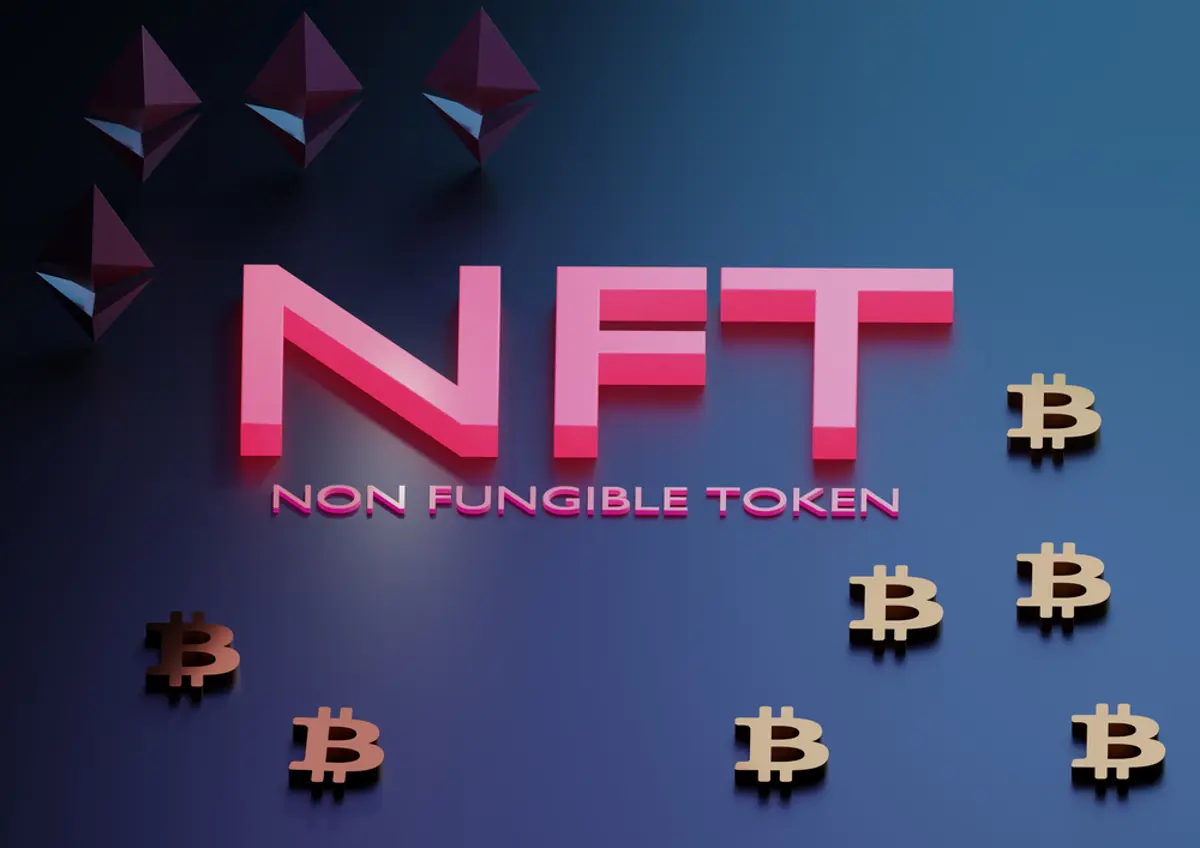When comparing crypto and NFT, you’ll find that they have some fundamental differences. In simple terms, NFT refers to an entry on the blockchain. Blockchains do not store actual media, however, because the storage costs would be prohibitive. Blockchains do, however, store transactions that are not fungible.
Non-fungible tokens
Non-fungible tokens (NFTs) have the potential to change the face of modern society. They are transforming everything from finance to art. Although the concept of NFTs is not new, it has only recently gained mainstream acceptance. Their popularity has been fueled by a recent auction at Christie’s auction house, where a piece of art was sold for $69.3 million in NFTs.
Non-fungible tokens can represent any asset digitally, including real-world properties, in-game avatars, domain names, tickets, and other digital collectibles. These tokens can be purchased with Ether on online NFT marketplaces. Because these tokens are decentralized, they can also be stored in a digital wallet.
The main difference between fungible and non-fungible tokens is that non-fungible tokens have a unique label that proves they are the original version of the same item. This label is created through specialized cryptographic code, which prevents them from being interchanged with other fungible assets.
Non-fungible tokens are similar to coins, but they cannot be traded for one another. Instead, they represent digital collectibles and assets that require differentiation in order to prove their value and scarcity. Some examples are virtual land parcels, artwork, and ownership licenses. For these reasons, they are best used in environments where the value of digital assets can be verified.
Non-fungible tokens are unique digital units of data that are stored in a blockchain. In contrast, fungible tokens are divisible, and can be purchased in small units. For instance, you can buy bitcoin in small amounts. However, NFTs cannot be divided. Therefore, you have to buy them in whole to get the full value. However, they are more valuable than fiat currency, and they can be a good investment.
Non-fungible tokens are cryptographic assets stored on a public blockchain. They have unique identification codes and metadata. This makes them difficult to replace and exchange for other items. Furthermore, they reduce the risk of fraud. Therefore, they are often used in crypto-currency projects. In fact, some of these projects have seen significant trading volumes.
Non-fungible tokens are unique digital assets, and are used in many applications of the internet. Many of these non-fungible tokens are based on cryptocurrencies, such as Bitcoin.
Blockchain
Tokenizing digital goods is one way to achieve this. These “tokens” convey ownership rights and are added to the blockchain. However, they don’t convey copyright rights and may not convey the original file size of the digital object. For example, an NFT containing a limited edition print of a painting might not convey exclusive rights to the image.
In the physical world, this method involves intermediaries, who take a cut of the profit. By contrast, NFTs require no intermediaries, meaning the transaction can be completed more quickly and easily. This makes NFTs the more efficient option for artists. They also allow artists to generate more revenue without having to pay intermediaries.
While NFTs can function as a digital currency, they are not identical to cryptocurrencies. One of the main differences between a cryptocurrency and an NFT is how they are used. A cryptocurrency is backed by a central bank and is issued by a government. NFTs are digital tokens that are issued by an agency.
Unlike fiat currency, NFTs are not interchangeable. They represent ownership of a physical or digital asset. Among the most popular NFTs are digital art, virtual trading cards, in-game assets, and real estate. While these types of assets aren’t interchangeable, they can be used in various applications, from in-game purchases to art and music to blockchain-based video games.
NFTs can take many forms, and they’re likely to continue taking more. One example is CryptoPunks, a project by artists who use NFTs to sell their art. These artworks have grown in value and sold for almost $17 million at Christie’s auction. Other NFTs include memes, which are becoming popular as collectors’ items. In fact, the image of a woman in “Disaster Girl” meme was sold for $473,000 in April 2018.
The differences between Blockchain and NFT are significant and can affect your decision to invest in either one. You should always consider the risks involved before putting your money at risk. NFTs are only worth what people are willing to pay for them. That’s why you should carefully assess which platform to use for your cryptocurrency transactions.
Trading sites
There is some confusion regarding cryptocurrency vs NFT trading sites. The two are very different but have some similarities. While Cryptos are typically traded on exchanges, NFTs are sold through auctions. Some sites allow buyers to place a bid, while others allow them to buy NFTs immediately.
Cryptocurrency trading is very similar to that of NFTs, but a NFT market focuses on non-fungible tokens. These digital assets are decentralized and encrypted digital payment systems that do not have any backing from any government or central authority. In some cases, people are purchasing NFTs because of their cryptographic proof. However, other individuals use NFTs to trade real estate, debt instruments, and music rights.
Although NFTs are relatively new, they have gained tremendous popularity in the past year. Their popularity was initially fueled by celebrity endorsements. Actor Logan Paul offered fans the chance to buy his popular Pokemon cards in exchange for NFTs. This helped to drive the NFT market and its adoption.
NFT trading sites are similar to Bitcoin exchanges, but they also allow users to mint and sell their own digital collectibles. They also feature a streamlined interface that is similar to Spotify, including scrollable columns, top sellers, hot collections, and live auctions. Users can also participate in the governance of these sites with RARI tokens. They can vote for the improvements and moderation of the site.
Another notable difference between cryptos and NFTs is the value of the non-fungible tokens. A non-fungible token is one that is valued on its intangible properties. This means that they are more difficult to manipulate than coins. A crypto like Bitcoin can have a high value, but a NFT may not.
There are also many NFT trading sites available online. One of the most popular NFT trading site is OpenSea. The website functions like an eBay marketplace, with the added advantage that buyers can browse listings by price and rarity. The site also offers a stats tab, which ranks sellers according to volume and average sale price. It supports Klatyn and Ethereum Polygon. It also has an auction system, where buyers can buy fixed-price NFTs directly from sellers. The offers and purchases are stored in the user’s profile.
Value
While the correlation between NFTs and crypto markets has become apparent over recent months, there is a fundamental difference between the two. In terms of the value of these assets, NFTs are less volatile than cryptos. As time goes by, the hype surrounding NFTs will fade and the remaining investors will be those with a genuine interest in the underlying artwork or collectibles and who see these assets as efficient stores of value.
As both are digital assets, cryptocurrencies and NFTs are frequently bought and sold. The two currencies have similar characteristics and are based on blockchain technology. The biggest difference between crypto and NFT is that a cryptocurrency is fungible and can be exchanged for other assets. On the other hand, a NFT has value that goes beyond economics.
NFTs are decentralized and can be used to democratize investing. They allow large assets to be broken down into smaller digital chunks, allowing multiple owners to share a stake. This makes it possible for individual investors to participate in high-value investments. Imagine being able to buy a small piece of a masterwork and share the profits when it is sold.
The NFT market’s recent correction is linked to the cryptocurrency price drop. The sell-offs began in mid-late May, when bitcoin and ether fell by about 53% from recent highs. Since then, the market has stabilized with less inflated trading volumes. However, the NFT market is still far from its peak in the first half of the year.
In a world where money is increasingly being carried digitally, people are gradually becoming more comfortable with using digital wallets to carry money or cryptocurrencies. As a result, the debate over Cryptocurrency vs NFT is gaining momentum in the technology world. While the two types of digital assets share some of the same characteristics, the key difference lies in their identity and functioning.
Cryptocurrencies have a strong future as a means of storing value and transferring money. However, the underlying technology behind these assets is still in its early stages. This means that there is still a lot of uncertainty to understand.

